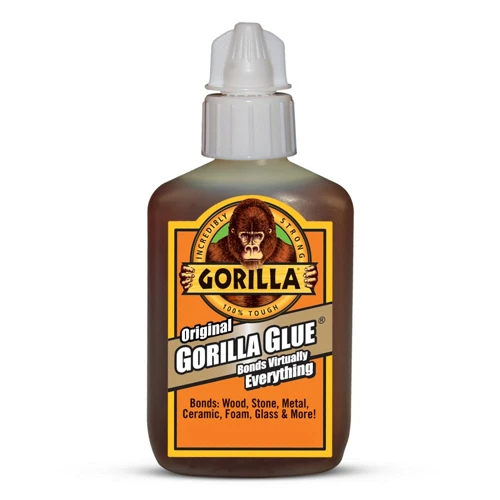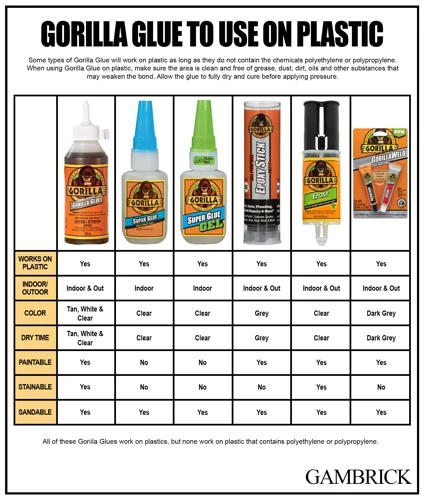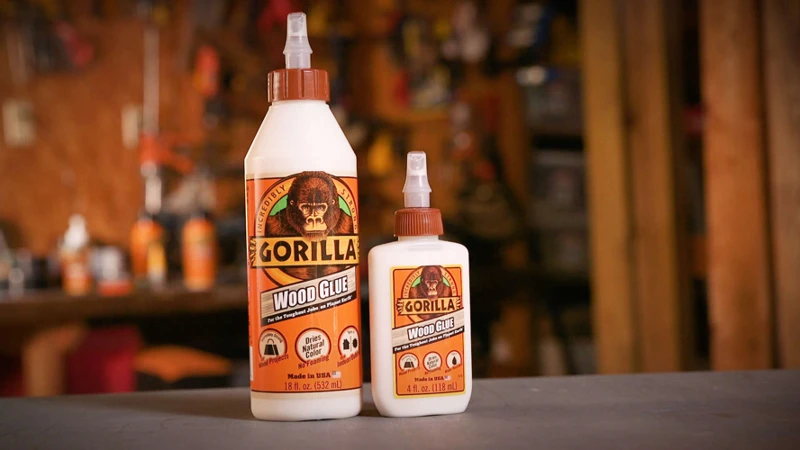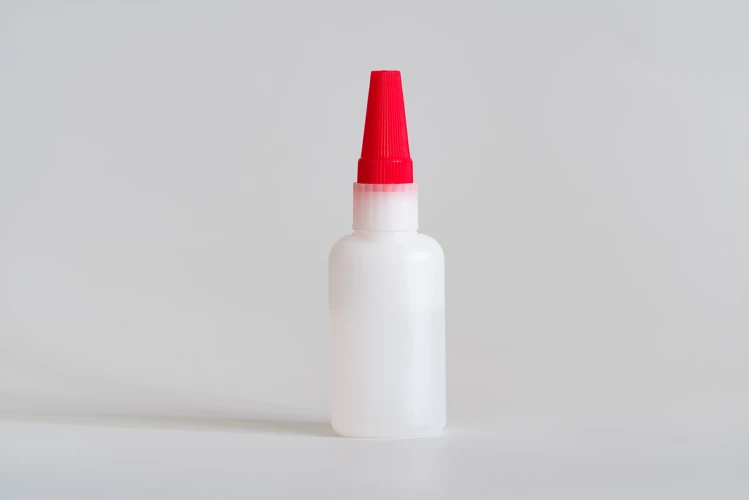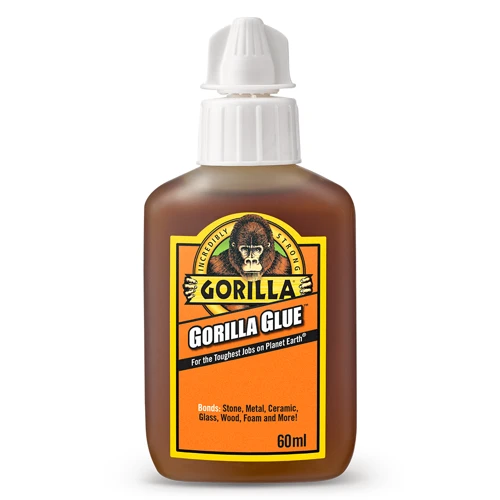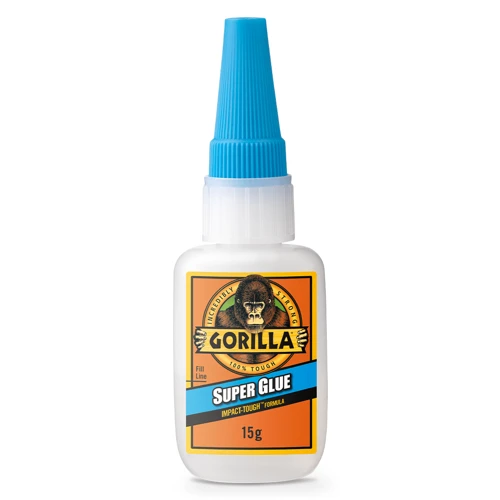When it comes to adhesives that offer an incredible level of bonding power, Gorilla Glue is often the go-to choice for both DIY enthusiasts and professionals. Known for its versatility and strength, it has become an indispensable tool in workshops and households alike. But have you ever wondered about the technology behind this sticky powerhouse? In this article, we delve into how Gorilla Glue works, its practical applications, and tips for its use.
How Gorilla Glue Works
The effectiveness of Gorilla Glue is not just a result of marketing hype; it’s backed by a potent formula and a remarkable bonding process. Understanding the gorilla glue science reveals why it’s so widely trusted for a myriad of tasks.
The Science Behind Gorilla Glue
At the molecular level, Gorilla Glue contains compounds that undergo a reaction when exposed to moisture. This reaction, known as polymerization, transforms the liquid glue into a solid, thermosetting polymer, which is incredibly strong and durable. The science here is the key to its formidable adhesive power.
Polyurethane Glue: A Key Component
Polyurethane glue is a critical ingredient in Gorilla Glue’s formula. This type of adhesive is renowned for its ability to bond a wide range of materials, from wood to plastic and beyond. The polyurethane reacts with moisture in the air and on the surfaces it’s applied to, expanding as it cures and forming an incredibly tight bond that’s tough to break.
Adhesive Technology in Gorilla Glue
The adhesive technology that powers Gorilla Glue is a testament to the advancements in chemical engineering. It’s this technology that gives the glue its unique properties and allows it to stand out in a crowded market.
Understanding Strong Adhesives
Strong adhesives like Gorilla Glue are characterized by their ability to resist forces that try to pull bonded materials apart. These adhesives create a bond that is resistant to impact, heat, and solvents, due in part to a tightly interlinked polymer network that forms during the curing process.
Gorilla Glue Strength and Bonding Materials
The gorilla glue strength is evident when it comes to bonding materials. It can join together dissimilar materials that other glues cannot, such as stone to metal or glass to wood. This versatility is a hallmark of Gorilla Glue, making it a favorite for complex repair tasks and creative projects.
Practical Applications of Gorilla Glue
Gorilla Glue’s applications are nearly limitless, thanks to its strong adhesive properties and the ability to work with a multitude of materials. Here are some ways in which it can be used.
Gorilla Glue Uses in Everyday Life
- Repairing broken household items such as furniture and toys.
- Securing loose tiles and fixtures.
- Mending ceramics or decorative pieces.
DIY Repairs with Gorilla Glue
For those who love tackling DIY repairs, Gorilla Glue is a staple. It’s perfect for woodworking projects, fixing outdoor furniture, and even shoe repair. Its ability to withstand the elements makes it particularly useful for outdoor applications.
Waterproof Glue: Gorilla Glue as a Solution
One of the standout features of Gorilla Glue is its water resistance. This waterproof glue can be used in applications where exposure to moisture is a concern without compromising the integrity of the bond.
Gorilla Glue Directions for Use
To achieve the best results with Gorilla Glue, it’s important to follow the correct usage instructions. Here’s a step-by-step guide to ensure a strong bond.
Prepare and Dampen the Surfaces
Clean the surfaces to be bonded and lightly dampen them if they are dry. This step is crucial as the moisture is needed for the glue to cure properly.
Evenly Apply Gorilla Glue Onto the Dry Surface
Apply a small amount of Gorilla Glue onto the dry surface. Remember, the glue expands up to three times its size, so less is more here.
Clamp the Two Surfaces Together Tightly
Press the two surfaces together and secure them with clamps. The tighter the clamp, the stronger the bond will be once the glue cures.
Clean up and Storage Tips
Wipe away any excess glue with a dry cloth and store your Gorilla Glue in a cool, dry place to ensure its longevity.
Technical Specs of Gorilla Glue
Gorilla Glue boasts impressive technical specifications, including a tensile strength that surpasses other common adhesives and the ability to withstand temperatures ranging from below freezing to over 200°F. Furthermore, it’s sandable, paintable, and stainable once cured, making it a versatile option for finishing touches.
When it comes to adhesives, there’s a fascinating world of science and practical application behind each product. If you’re curious about the mechanics of how different adhesives work, you might be interested in our detailed exploration of how skin glue works, which is used in medical settings. On the craftier side of things, our article on how Elmer’s glue works dives into the ubiquitous school glue that’s a staple in classrooms and homes. And for those tough bonding challenges, our feature on how to store Gorilla Glue ensures you get the most out of this incredibly strong adhesive. But if it’s the powerhouse Gorilla Glue that’s caught your attention, let’s take a closer look at how Gorilla Glue works to understand why it’s become a go-to solution for heavy-duty fixes.
Frequently Asked Questions (FAQs)
Below are answers to some common questions about Gorilla Glue to help you understand its use and capabilities.
- How long does Gorilla Glue take to dry? It takes about 10-15 minutes for Gorilla Glue to set, with a complete cure time of 24 hours.
- Can Gorilla Glue be used on all materials? While it works on a wide range of materials, it’s not recommended for use on polyethylene or polypropylene plastics.
- Is Gorilla Glue toxic? Before curing, it can be harmful if ingested or if it comes into contact with the skin or eyes. Use with proper safety precautions.
With its superior strength and versatility, Gorilla Glue has cemented its place as a reliable adhesive solution. Whether for minor home repairs or robust construction projects, it offers a bonding solution that is both user-friendly and highly effective.
